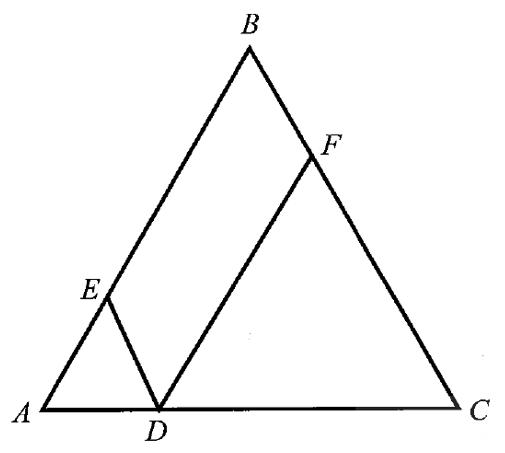PROPERTIES OF ARITHMETIC MEAN
Arithmetic mean is one of the measures of central tendency which can be defined as the sum of all observations to be divided by the number of observations.
Now, let us look at the properties of arithmetic mean.
Property 1 :
If all the observations assumed by a variable are constants, say "k", then arithmetic mean is also "k".
For example, if the height of every student in a group of 10 students is 170 cm, the mean height is, of course 170 cm.
Property 2 :
The algebraic sum of deviations of a set of observations from their arithmetic mean is zero.
That is,
for unclassified data, ∑(x - x̄) = 0.
And for a grouped frequency distribution, ∑f(x - x̄) = 0.
For example, if a variable "x" assumes five observations, say 10, 20, 30, 40, 50, then x̄ = 30.
The deviations of the observations from arithmetic mean (x - x̄) are -20, -10, 0, 10, 20.
Now, ∑(x - x̄) = (-20) + (-10) + 0 + 10 + 20 = 0
Property 3 :
Arithmetic mean is affected due to a change of origin and/or scale which implies that if the original variable "x" is changed to another variable "y" effecting a change of origin, say "a" and scale, say "b", of "x". That is y = a + bx.
Then we have,
Arithmetic mean of "y" = a + bx̄
For example, if it is known that two variables x and y are related by 2x + 3y + 7 = 0 and x̄ = 15, then
Arithmetic mean of "y" = (-7 - 2x̄) / 3
Plug x̄ = 15
Arithmetic mean of "y" = (-7 - 2x15) / 3
Arithmetic mean of "y" = (-7 - 30) / 3
Arithmetic mean of "y" = -37/ 3
Arithmetic mean of "y" = -12.33
Property 4 :
If there are two groups containing n₁ and n₂ observations
x̄1 and x̄2 are the respective arithmetic means, then the combined arithmetic mean is given by
x̄ = (n1x̄1 + n2x̄2) / (n1 + n2)
This property could be extended to more than two groups and we may write it as
x̄ = ∑nx̄ / ∑n
Here,
∑nx̄ = n1x̄1 + n2x̄2 + ..............
∑n = n1 + n2 + ........................
Some Other Properties of Arithmetic Mean
1) It is rigidly defined.
2) It is based on all the observations.
3) It is easy to comprehend.
4) It is simple to calculate.
5) It is least affected by the presence of extreme observations.
6) It is amenable to mathematical treatment or properties.
The above properties make "Arithmetic mean" as the best measure of central tendency.
However, arithmetic mean has some draw backs.
They are,
1) It is very much affected by sampling fluctuation.
2) Arithmetic mean can not be advocated to open en classification.
For open end classification, the most appropriate measure of central tendency is "Median.
Kindly mail your feedback to v4formath@gmail.com
We always appreciate your feedback.
©All rights reserved. onlinemath4all.com
Recent Articles
-
Digital SAT Math Problems and Solutions (Part - 148)
Apr 22, 25 08:20 AM
Digital SAT Math Problems and Solutions (Part - 148) -
Eliminating the Parameter in Parametric Equations
Apr 21, 25 10:37 PM
Eliminating the Parameter in Parametric Equations -
Quadratic Equation Problems with Solutions (Part - 3)
Apr 21, 25 02:37 AM
Quadratic Equation Problems with Solutions (Part - 3)
